On view at the Seattle Asian Art Museum, Monk at the Moment of Enlightenment, Yuan Dynasty, 14th Century
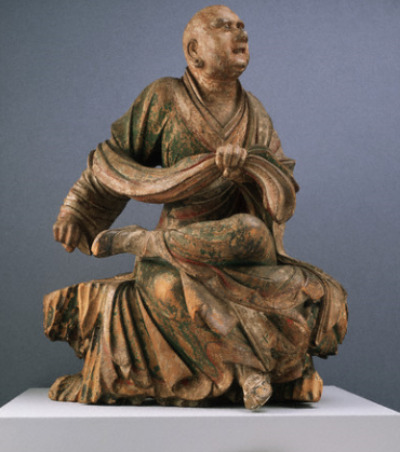 Opening Oct. 2 at Kobo at Higo, Tommer Peterson’s Ordinary Household Gods, including, below, Rogue Monk, 2010.
Opening Oct. 2 at Kobo at Higo, Tommer Peterson’s Ordinary Household Gods, including, below, Rogue Monk, 2010.
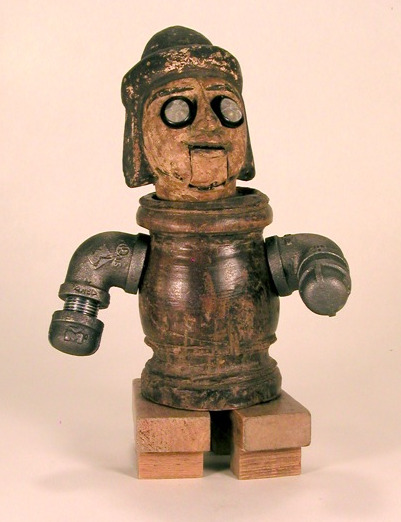
Regina Hackett takes her Art to Go
On view at the Seattle Asian Art Museum, Monk at the Moment of Enlightenment, Yuan Dynasty, 14th Century
 Opening Oct. 2 at Kobo at Higo, Tommer Peterson’s Ordinary Household Gods, including, below, Rogue Monk, 2010.
Opening Oct. 2 at Kobo at Higo, Tommer Peterson’s Ordinary Household Gods, including, below, Rogue Monk, 2010.

Robert Gober – false evidence of an ordinary life
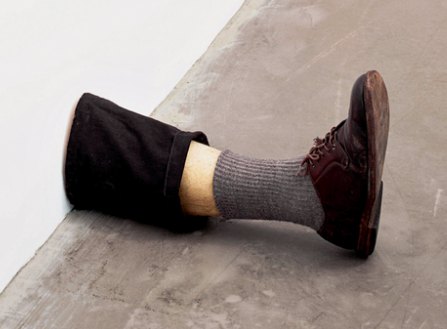 Kathleen Faulkner – shoes made of river stones, transforming your feet into a river
Kathleen Faulkner – shoes made of river stones, transforming your feet into a river
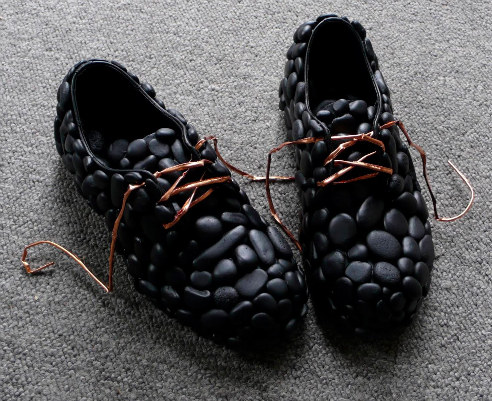 Matthew Barney – excess to bolster an excess
Matthew Barney – excess to bolster an excess
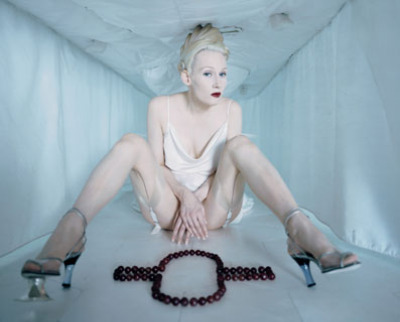 Iris Schieferstein – the jealousy of the flightless biped, grounding others
Iris Schieferstein – the jealousy of the flightless biped, grounding others
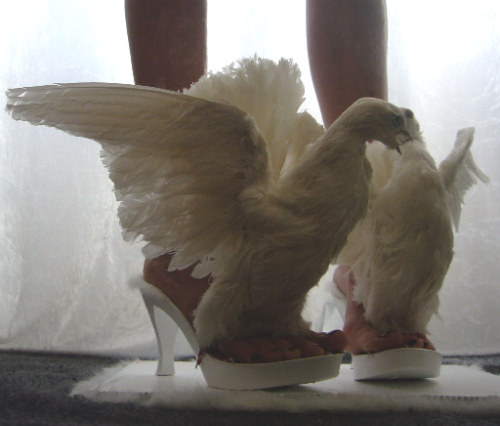 Marilyn Minter – glamour and nausea
Marilyn Minter – glamour and nausea
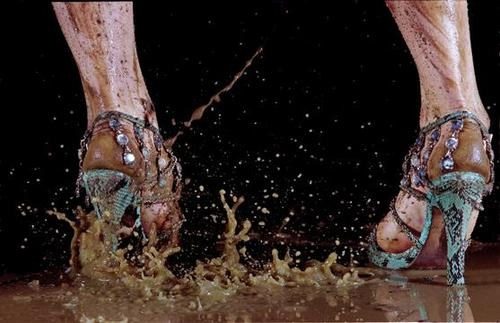 Do-Ho
Do-Ho
Suh – power corrupts
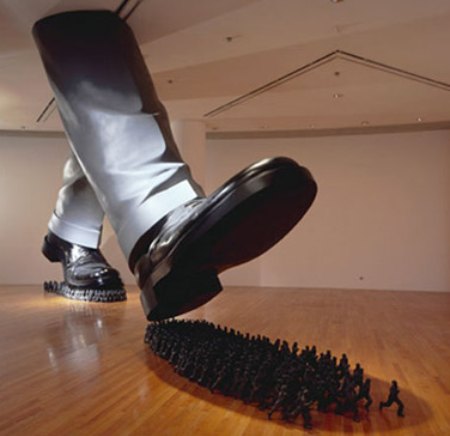 Jennifer Campbell – She did it to herself.
Jennifer Campbell – She did it to herself.
The art that matters to you lives in your head. It emerges into consciousness whenever the world presents its echo. On a fine day, for instance, you note Fragonard clouds. In the rain by a pond, you see John Constable muck. Smashed glass on the street, Gretchen Bennett. White-out paint passages to cover graffiti, Matt McCormick. Open any old refrigerator, and you remember a video of a wolf chasing down dinner. (Vanessa Renwick, Hunting Requires Optimism.) See a pit bull cock its head to note the approach of a stranger, and Michael Spafford‘s Minotaur and the Maiden series from the 1980s comes to mind. (The long jaw, the barrel chest, the spring in the legs, poised to strike.)
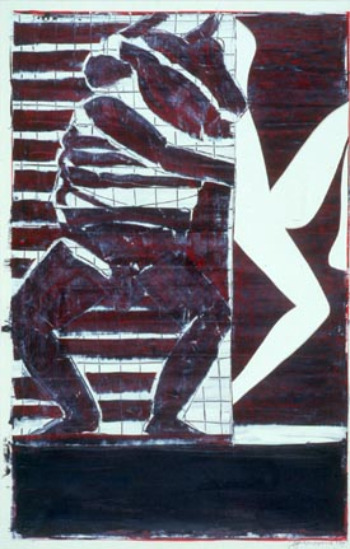 Wrong Distance made the same point quite nicely: a random photo of a room instantly evokes German painter Matthias Weischer.”It’s far busier than something he would ever do, the colors are not quite, it has a person in it, it’s a photo. and yet…”
Wrong Distance made the same point quite nicely: a random photo of a room instantly evokes German painter Matthias Weischer.”It’s far busier than something he would ever do, the colors are not quite, it has a person in it, it’s a photo. and yet…”
Artist Trust announced six finalists for the Arts Innovator Award for Washington State artists, funded by the Dale and Leslie Chihuly Foundation. Two of the six will each receive $25,000. Good work panelists! I’d pick Leo Saul Berk and Akio Takamori but can’t say any of these would be a mistake in the top spot.
The six are:
Leo Saul Berk (His website here, my most recent review here)
Detail from Spider Hole, 2009
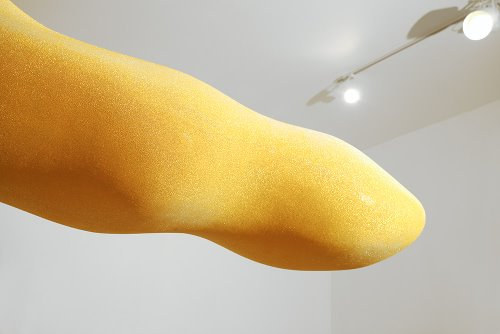 Margie Livingston (Her website here, my latest review here)
Margie Livingston (Her website here, my latest review here)
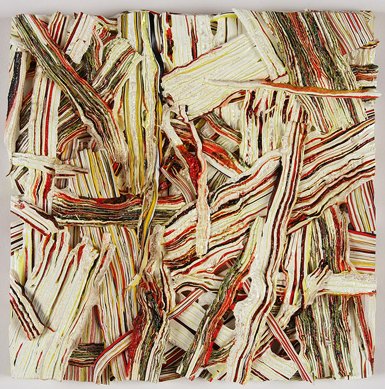 Lead Pencil Studio (Annie Han and Daniel Mihalyo) (Their website, Jen Graves’ review)
Lead Pencil Studio (Annie Han and Daniel Mihalyo) (Their website, Jen Graves’ review)
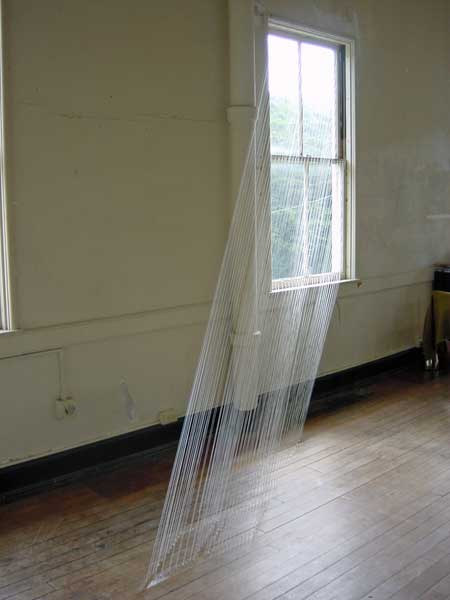 Maggie Orth Barcode Man, 2009
Maggie Orth Barcode Man, 2009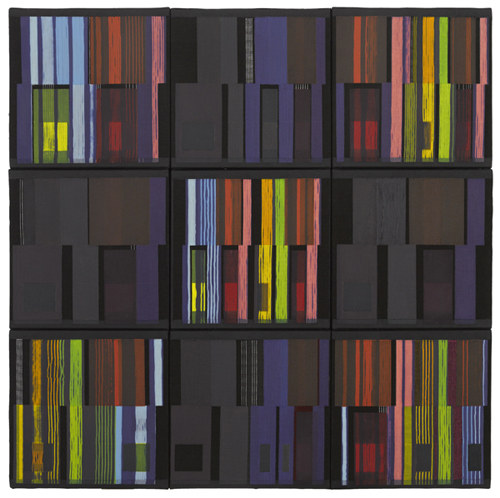 Hugo Solis, Metaphors for Dead Pianos (video image/sound on the link)
Hugo Solis, Metaphors for Dead Pianos (video image/sound on the link)
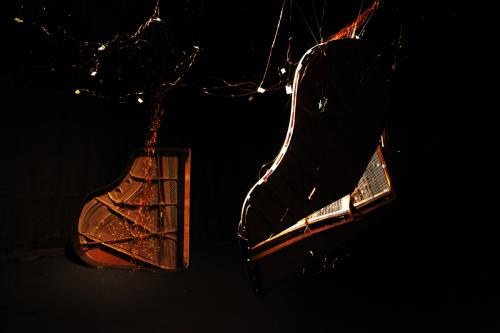 Akio Takamori (more, and my latest review here)
Akio Takamori (more, and my latest review here)
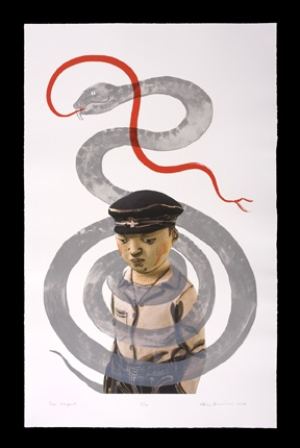 Winners announced Oct. 7.
Winners announced Oct. 7.
No matter how grounded any particular piece of art may be in the authenticating experience of any one viewer, art is, in the end, a leap of faith. While I was not willing to take it for Ben Waterman when he graduated in 2009 from the University of Washington with an MFA in clay (Elizabeth Bryant called his work at the time, sympathetically, half-baked), a year later, it looms large, and the leap is effortless.
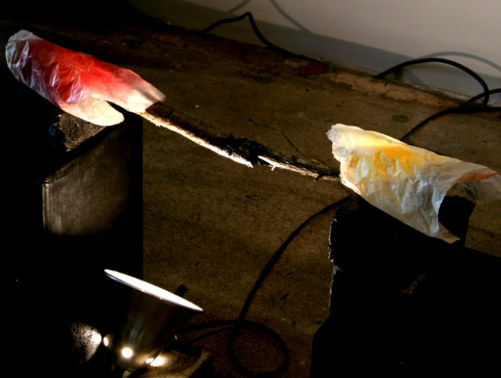 He makes mud shine. Despite the title of his installation at 4Culture Gallery, The Grand Rooms, those looking for finish won’t find it. If he’d called it, Laboratory in a Corridor, we’d have truth in advertising, but he isn’t interested in advertising, truthful or otherwise. 4Culture Gallery is a long corridor that hooks left and continues. And Waterman’s material experiments contain in their shoddy manifestations a suggestion of grandeur around the corner of his next effort. (We can’t go on. We’ll go on.)
He makes mud shine. Despite the title of his installation at 4Culture Gallery, The Grand Rooms, those looking for finish won’t find it. If he’d called it, Laboratory in a Corridor, we’d have truth in advertising, but he isn’t interested in advertising, truthful or otherwise. 4Culture Gallery is a long corridor that hooks left and continues. And Waterman’s material experiments contain in their shoddy manifestations a suggestion of grandeur around the corner of his next effort. (We can’t go on. We’ll go on.)
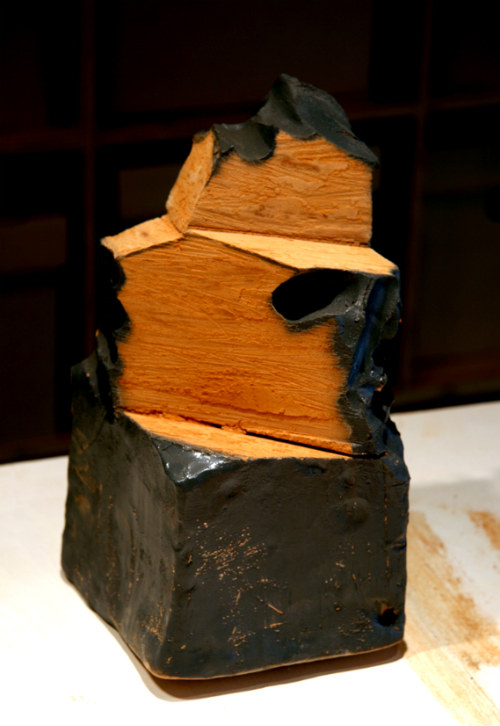 He fails. Attempts to graph the vigor of wild plum with the sweetness of the domesticated do not hold. His thumbprints on bits of unfired clay do not add up to a bloom. The joints of his efforts swell and leak. His plans collapse under the weight of their execution.
He fails. Attempts to graph the vigor of wild plum with the sweetness of the domesticated do not hold. His thumbprints on bits of unfired clay do not add up to a bloom. The joints of his efforts swell and leak. His plans collapse under the weight of their execution.
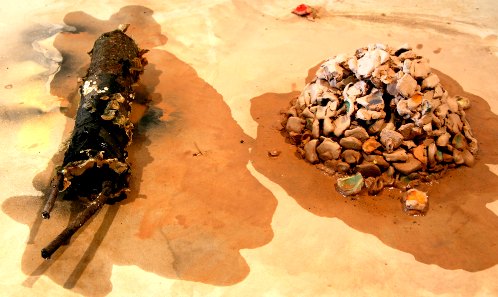
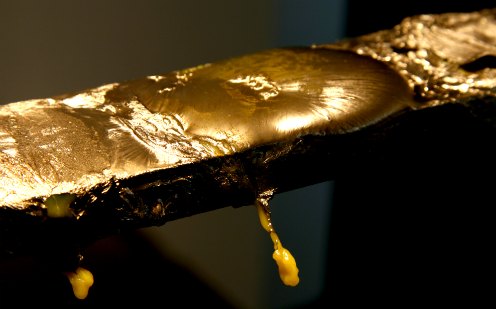
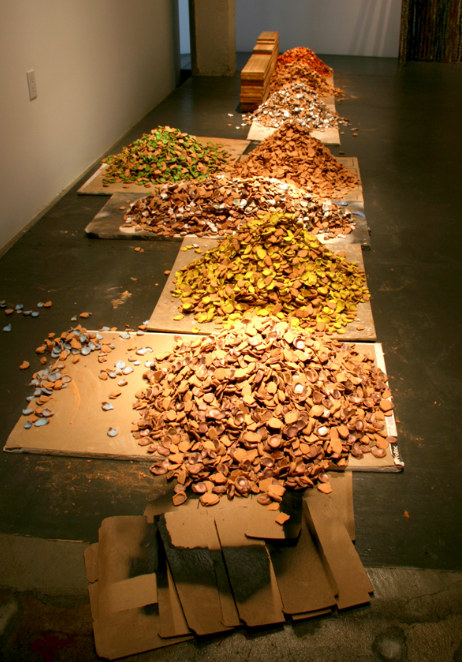 Nevertheless, he sets the table…
Nevertheless, he sets the table…
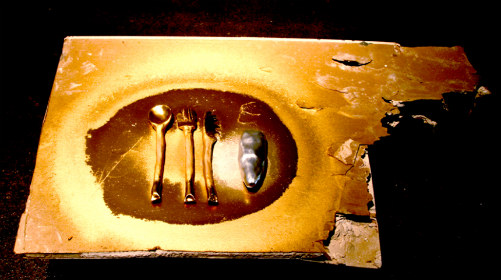 …and sets the floor on fire with his desire.
…and sets the floor on fire with his desire.
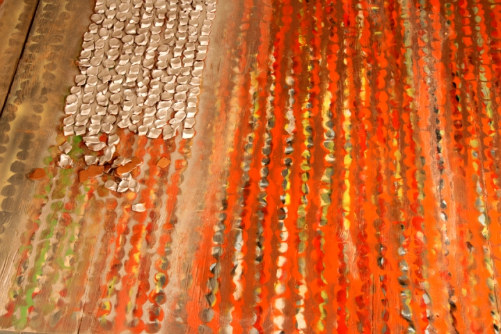 The Northwest has a robust tradition of handyman poetics, from Buster Simpson to Elias Hansen. Waterman stakes his handyman poetics after the fall, with no possibly of making it work. And yet he goes on, shouldering the weight of never-say-die America. While in search of a true thing within the bare, ruined choirs of bombastical idealism, he leaves behind him a rare and vulnerable beauty.
The Northwest has a robust tradition of handyman poetics, from Buster Simpson to Elias Hansen. Waterman stakes his handyman poetics after the fall, with no possibly of making it work. And yet he goes on, shouldering the weight of never-say-die America. While in search of a true thing within the bare, ruined choirs of bombastical idealism, he leaves behind him a rare and vulnerable beauty.
Through Sept. 30.
Big score for Seattle’s Fantagraphics: Next summer it will publish Ah Pook Is Here, a graphic novel from the 1970s by Burroughs and artist Malcolm McNeill. Begun as a comic strip titled The Unspeakable Mr. Hartt in the London magazine Cyclops, Burroughs and MacNeil extended it into a novel of 120 pages that folds out into a single scroll painting with text inserted.
No takers from the publishing world. (In the 1970s, the term “graphic novel” was not yet in use to signify a word/image combo, and the project was considered uncommercially weird.) After seven years of effort, Burroughs and McNeill gave up on it.
Burroughs was 56 when they met, McNeill 23.
McNeill:
In the first meeting he’d introduced me to the Reactive Mind, Reichs’
Orgone theories, Randolph Hearst, “Nigger Killing” sheriffs, Mugwumps,
the CIA, the Algebra of Need and a whole lot of other stuff I knew next
to nothing about. I knew right away I was in at the deep-end, but of
what, I had no idea. In time I realized I’d even got that wrong. ‘Deep’
in conventional space/time orientation implies that there’s some kind of
bottom. (more)
Below, from Ah Pook, a “tornado of vigilantes sweeps up from the bible belt.”
 Jan Hermann on the influence of The Unspeakable Mr. Hartt here.
Jan Hermann on the influence of The Unspeakable Mr. Hartt here.
From her artist statement:
An eminent philosopher among my friends, who can dignify even your ugly furniture by lifting it into
the serene light of science, has shown me this pregnant little fact. Your pier-glass or extensive
surface of polished steel made to be rubbed by a housemaid, will be minutely and multitudinously
scratched in all directions; but place now against it a lighted candle as a centre of illumination, and
lo! the scratches will seem to arrange themselves in a fine series of concentric circles round that
little sun. It is demonstrable that the scratches are going everywhere impartially and it is only your
candle which produces the flattering illusion of a concentric arrangement, its light falling with an
exclusive optical selection. These things are a parable. The scratches are events, and the candle
is the egoism of any person now absent.
George Elliott, Middlemarch
Tippit, Lazy Susan, 2010
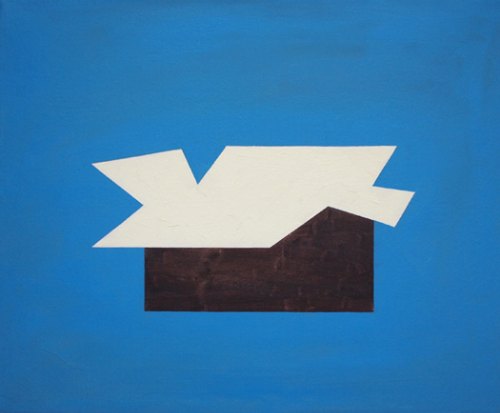 At Peregrine through Sept. 30.
At Peregrine through Sept. 30.
When Hans Hofmann asked Jackson Pollock why he did not work more from nature, Pollock is said to have replied, “I am nature.”
Who doesn’t feel the same?
It’s why we aspire to push up daisies or be scattered on the water as ashy food for fish.
Heidi Anderson, Grey Face
Watercolor on paper
9″ x 15″ 2007
 Eric Yahnker, Bummed Bouquet, Graphite on paper, 52.5″ x 65″ 2009 (From Playboys and Killjoys at Ambach & Rice)
Eric Yahnker, Bummed Bouquet, Graphite on paper, 52.5″ x 65″ 2009 (From Playboys and Killjoys at Ambach & Rice)
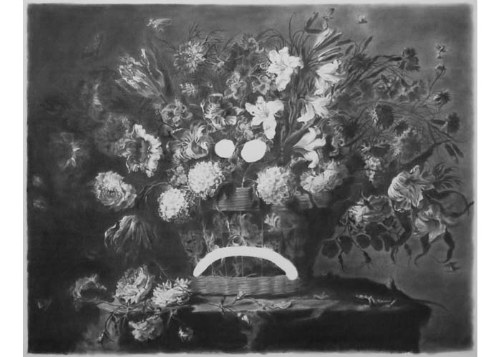
Barbara Noah, Earth As Bowling Ball II, Oil on photo emulsion on linen, 72″ x 72″
From Happy Hour installation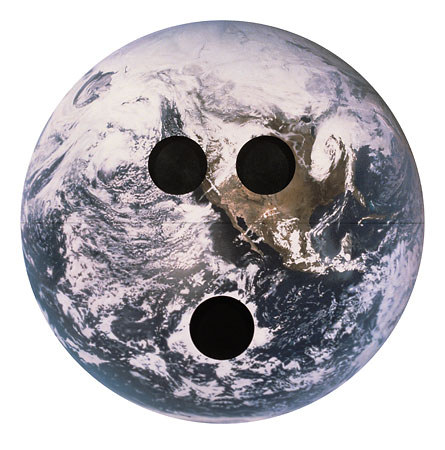
an ArtsJournal blog


